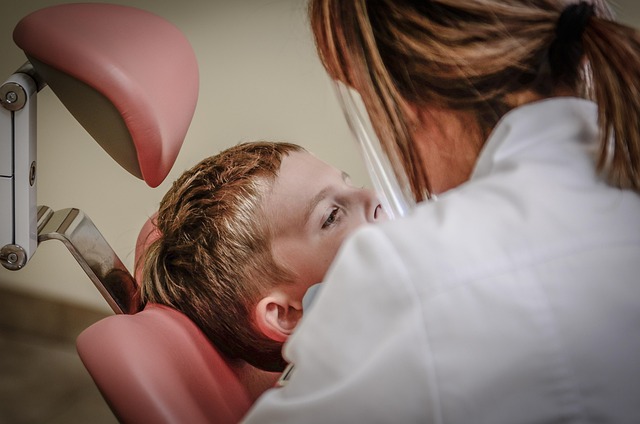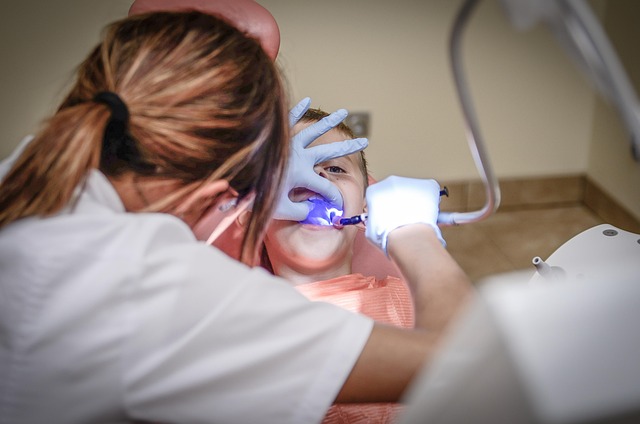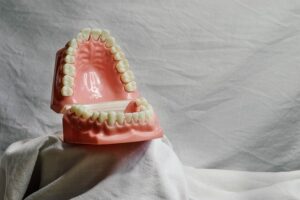Professional liability insurance, also known as malpractice coverage, is crucial for protecting dental providers from financial losses stemming from patient harm claims. It shields dentists from legal responsibilities, covering fees, settlements, and judgments, allowing them to focus on delivering quality care without constant worry about lawsuits. This coverage is vital in dentistry's high-risk environment, mitigating economic losses, legal fees, and potential reputational damage. By evaluating practice needs, understanding risks, and consulting specialists, dental professionals can choose appropriate liability protection, ensuring patient safety, ethical practice, and peace of mind.
In the dynamic field of dentistry, ensuring comprehensive professional protection is paramount. This article delves into the intricacies of professional liability for dentists, offering a detailed overview for dental providers navigating this critical aspect of their practice. We explore essential topics such as understanding liability insurance, mitigating common risks, and choosing tailored coverage. Additionally, real-world case studies highlight the importance of proactive risk management in dentistry, providing valuable insights for professionals seeking to safeguard their careers and practices.
- Understanding Professional Liability for Dentists: A Comprehensive Overview
- The Importance of Liability Insurance in Dental Practice
- Common Risks and Claims Faced by Dental Professionals
- How to Choose the Right Liability Coverage for Your Dental Practice
- Case Studies: Real-World Examples of Dental Liability Issues
- Strategies for Risk Management and Mitigation in Dentistry
Understanding Professional Liability for Dentists: A Comprehensive Overview

Professional liability, often referred to as malpractice insurance, is a crucial aspect of protecting dental providers from potential risks and financial burdens. This comprehensive coverage safeguards dentists against claims of negligence or professional misconduct that may arise during their practice. When a patient experiences harm due to a dentist’s actions or inactions, such as an incorrect diagnosis, treatment error, or failure to obtain informed consent, the affected party can file a lawsuit seeking compensation for any resulting damages.
Dentists must navigate a complex landscape of legal responsibilities and patient expectations. Professional liability insurance acts as a shield, covering legal fees, settlements, and judgments if a claim is successful. It ensures that dental professionals can focus on delivering quality care without constantly worrying about potential lawsuits. Understanding the intricacies of professional liability is essential for dentists to make informed decisions regarding their coverage, ensuring they are adequately protected in this dynamic healthcare environment.
The Importance of Liability Insurance in Dental Practice

In the high-stakes world of dentistry, where every procedure carries potential risks and complications, professional liability insurance stands as a cornerstone of protection for dental providers. This vital coverage shields dentists from financial repercussions arising from medical mistakes, patient harm, or legal disputes that may surface years after a treatment is administered. By mitigating these risks, it allows practitioners to focus on delivering quality care without the constant shadow of potential lawsuits.
Without adequate professional liability insurance, dentists could face severe economic consequences should they be held legally responsible for adverse outcomes. This coverage not only compensates victims but also defrays legal fees and court costs associated with defense. More importantly, it preserves the reputation and career of dental providers by demonstrating their commitment to patient safety and ethical practice, fostering trust among both colleagues and patients alike in the intricate field of oral health care.
Common Risks and Claims Faced by Dental Professionals

Dental professionals, despite their specialized skills and dedicated service, are not immune to a range of risks and potential claims. One of the primary concerns is professional liability for dentists, which arises from errors or omissions during treatment that result in patient harm. These can include misdiagnosis, incorrect treatment planning, or technical mistakes in procedures. For instance, a dentist might be held liable if they fail to identify an oral cancer symptom, leading to a delay in diagnosis and treatment.
Another common risk is malpractice litigation, where patients or their families file lawsuits alleging negligence. This can stem from various incidents, such as causing physical pain during a procedure, using outdated equipment, or failing to obtain informed consent. Given the intimate nature of dental work, even minor complications can escalate into legal issues. Thus, adequate professional liability insurance for dentists is essential to safeguard their practice and protect them from financial burdens associated with claims and lawsuits.
How to Choose the Right Liability Coverage for Your Dental Practice

When selecting the right professional liability for dentists, it’s crucial to consider your practice’s unique needs and potential risks. This type of coverage, often referred to as malpractice insurance, protects dental providers from financial loss in case of negligence claims. Start by evaluating your specialty area; different dental disciplines may face distinct liability concerns. For instance, a cosmetic dentist might require higher coverage due to the potentially high-risk nature of their procedures.
Next, analyse your practice’s existing safety protocols and risk management strategies. Thorough documentation, up-to-date consent forms, and adherence to industry standards can significantly reduce claims probabilities. Discuss these factors with insurance brokers who specialise in dental coverage. They can offer tailored policies that align with your practice’s profile, ensuring comprehensive professional liability for dentists protection at competitive rates.
Case Studies: Real-World Examples of Dental Liability Issues

Dental professionals, like any healthcare provider, face unique challenges and potential risks that can lead to significant liability issues. Case studies from real-world scenarios highlight the importance of robust professional protection for dentists. For instance, consider a scenario where a dentist performed a routine procedure but an unexpected complication arose due to equipment malfunction or human error. This could result in patient harm, leading to medical malpractice lawsuits and substantial financial burdens. Another case might involve miscommunication between dental staff and patients regarding treatment plans, causing dissatisfaction and potential legal repercussions.
These examples underscore the need for dentists to be adequately insured against professional liability. By understanding the risks inherent in their practice, dental providers can take proactive measures to mitigate potential losses. This includes staying updated on industry standards, maintaining thorough records, and ensuring staff training. Moreover, consulting with insurance specialists who specialize in professional liability for dentists can provide tailored coverage options, offering peace of mind and financial protection in the event of unforeseen circumstances.
Strategies for Risk Management and Mitigation in Dentistry

In dentistry, managing risks is paramount to ensure patient safety and protect professionals from potential liabilities. A robust risk management strategy involves several key components. First, staying up-to-date with continuing education courses focused on best practices and industry regulations is crucial. This equips dentists with the latest knowledge to deliver quality care and minimize errors. Additionally, implementing comprehensive infection control protocols not only safeguards patients but also acts as a preventive measure against lawsuits related to healthcare-associated infections.
Regular reviews of insurance policies, including professional liability for dentists, are essential. Adequate coverage protects practitioners from financial losses due to malpractice claims. Moreover, fostering open communication with staff and patients about expectations, potential risks, and consent processes can mitigate liabilities. Documenting these interactions thoroughly serves as a shield in case of disputes, demonstrating due diligence and patient awareness.
